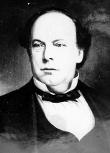The third Christmas pantomime put on by George Coppin, following the success of his previous productions Dick Whittington and The Babes in the Wood. As with Walch's 1880 Sinbad pantomime (Sinbad the Sailor; Or, The Pet and the Peri, the Old Man of the Sea, and the Dwarf of the Diamond Valley), this version was also likely based on John Strachan's 1869 London production. This 1893 version differs from Walch's earlier work in a number of respects, however. Most notable is the 'new business and topicalities,' along with a score for which Walch provided a number of songs. It is also clear that Walch reworked the original story, presenting 'a lengthy list of characters [comprising] names on various rungs of the histrionic ladder,' including Little Jack Horner and his mother, the Emperor of Jumbuckfoo, and Princess Dazzlina, Sinbad's lady love (Table Talk 22 December 1893, p.5).
The songs incorporated into the narrative include drawing-room ballads, coaster songs, airs and burlesques. In this respect, too, the Age reviewer notes that the 'songs constitute the main portion of the pantomime [and] as most of them are tuneful and popular they will no doubt prove welcome' (27 December 1893, p.5). Indeed, Maggie Moore's numbers proved to be among the most popular with audiences - notably 'Two Little Maids in Blue,' which she presented in both editions. Mr Leumane, who sang two numbers within the show provided a song of his own, 'That's What I Want to Know' for the first edition.
The Harlequinade, 'invented and produced by Tom Queen' was designed so as to show his ability as an acrobat and contortionist, in addition to presenting the skillful Perman Trio. Also included as part of the evening's entertainment was a 'Moving Panorama of the Royal Marriage,' painted by Harry Grist.
[Source: Australian Variety Theatre Archive]


